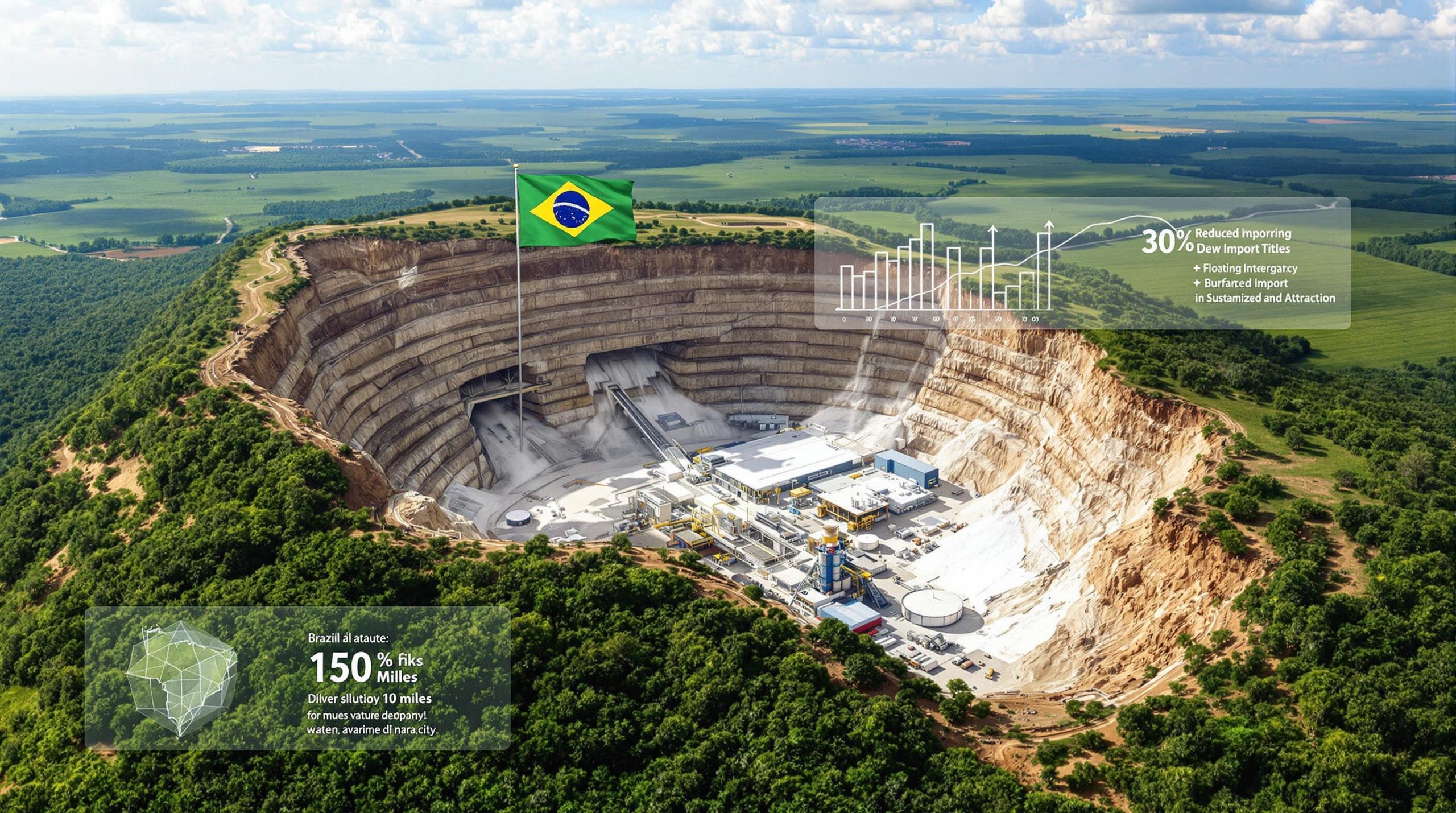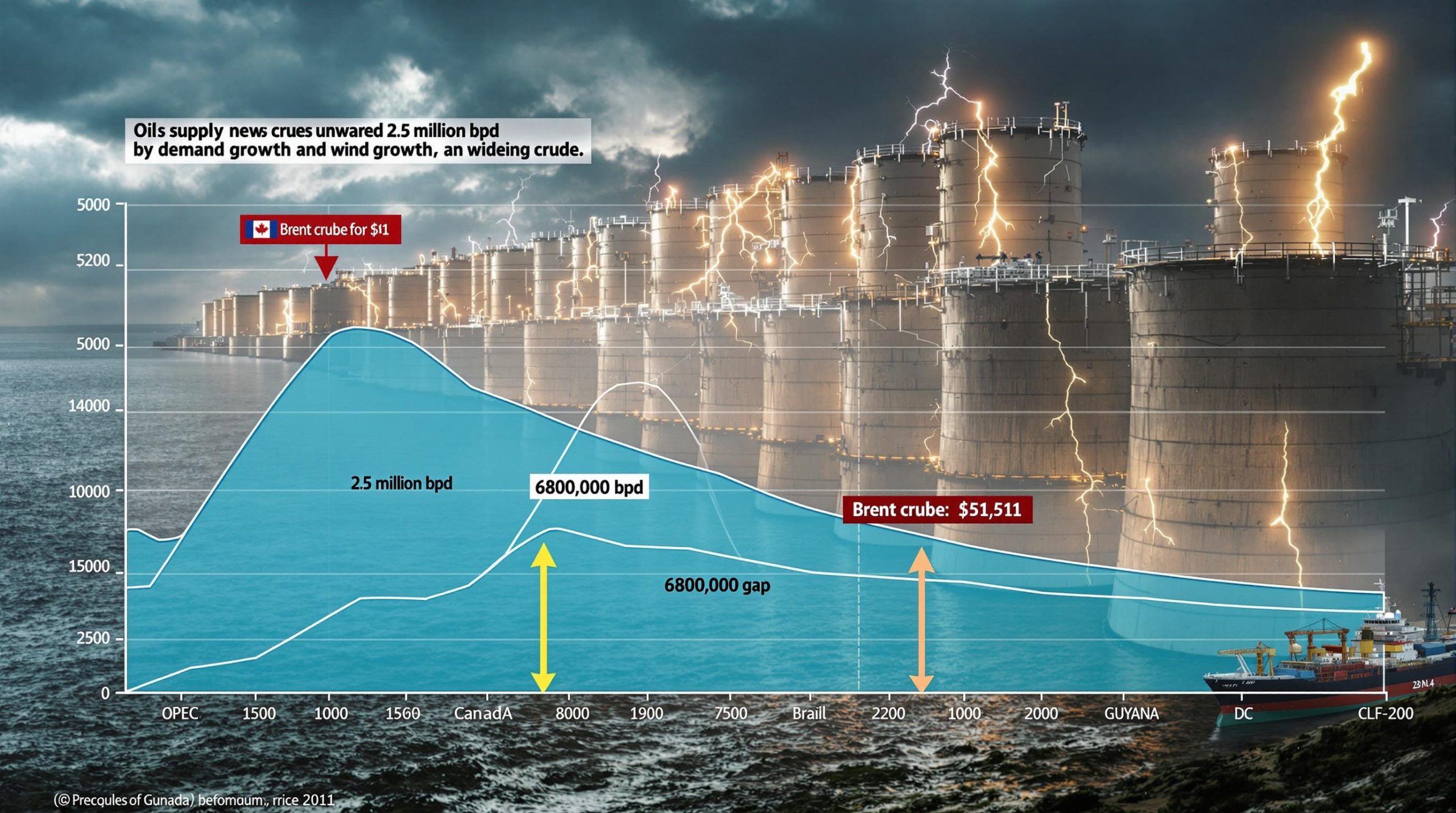What's Happening with Teck Resources in Chile?
Teck Resources has faced significant challenges with its ambitious Quebrada Blanca (QB2) copper mine in Chile, representing a microcosm of broader industry struggles. Recent announcements reveal a substantial downgrade in production guidance for 2025, with output now expected between 210,000 and 230,000 metric tons—down from the previous projection of 230,000 to 270,000 metric tons.
The primary culprit behind this reduction is a series of tailings storage complications that have proven more complex than initially anticipated. These issues require additional capital expenditure and are creating bottlenecks that restrict the mine's production capacity.
Recent Production Setbacks at Quebrada Blanca
The current tailings challenges represent just the latest chapter in QB2's troubled development history. Engineers at the site have encountered unexpected geological conditions that complicate waste material management, requiring substantial redesign of certain storage facilities.
"The tailings management system requires additional engineering modifications to achieve optimal performance," notes a technical assessment from Teck's operations team. These modifications involve strengthening containment structures and implementing enhanced water recovery systems—all contributing to production constraints.
The setbacks have prompted analysts to question whether Teck can achieve its long-term production targets, with Jefferies analysts Christopher LaFemina and Patricia Hove specifically highlighting investor skepticism around the project's viability.
A History of Project Challenges
QB2's troubled journey extends far beyond the current tailings issues:
- The expansion project exceeded its initial budget by approximately $4 billion
- Completion was delayed by several years due to COVID-19 disruptions and technical complications
- Previous technical problems included multiple plant operational failures during commissioning
- Geotechnical challenges repeatedly disrupted the mine's ramp-up phase
- Ship loader repairs are now expected to continue into the first half of 2026
The mine's challenging Andean location at high altitude in Chile's Atacama region has compounded these difficulties, with extreme weather conditions and limited infrastructure access creating logistical hurdles that few other copper projects face.
Despite holding a significant 60% indirect interest in Quebrada Blanca, Teck has struggled to demonstrate operational mastery of this complex asset—raising questions about the mining industry's collective ability to deliver major copper projects on time and on budget.
How Do These Setbacks Impact Global Copper Supply?
The difficulties at Quebrada Blanca represent more than just a corporate challenge for Teck Resources—they exemplify a critical supply-side problem for the global copper supply forecast at precisely the moment when demand is accelerating.
Widening Supply-Demand Gap
QB2's reduced output—20,000 to 40,000 metric tons lower than previously forecast for 2025—may seem modest in isolation, but it joins a growing list of major copper projects facing delays or underperformance worldwide. This production shortfall compounds existing market tightness in several ways:
- Global electrification initiatives continue to accelerate rising copper demand
- Renewable energy infrastructure requires 4-5 times more copper than traditional power systems
- Electric vehicle production (requiring 3-4 times more copper than conventional vehicles) is expanding rapidly
- Grid modernization programs in developed economies are copper-intensive
- Emerging market industrialization maintains strong baseline demand
These demand drivers collide with an increasingly constrained supply picture. Copper industry analysts now project potential shortfalls exceeding 6 million metric tons annually by 2030 if current project development challenges persist.
The industry-wide struggle to expand production comes as existing mines contend with declining ore grades, with the global average copper content having fallen from 1.2% to under 0.5% over the past two decades. This decline necessitates processing significantly more material to yield the same copper output, increasing both costs and environmental footprint.
Strategic Importance of QB2 to Teck's Future
For Teck Resources specifically, the Quebrada Blanca expansion represents a transformational asset designed to:
- Double the company's copper output when operating at full capacity
- Form the cornerstone of Teck's strategic pivot away from coal toward base metals
- Establish the company as a major copper producer with a decades-long production horizon
- Provide exposure to anticipated copper price strength amid growing supply deficits
- Generate substantial free cash flow for future growth initiatives
The mine is expected to produce approximately 300,000 metric tons of copper annually at full capacity—representing roughly 1.5% of global copper mine production. While this single operation cannot resolve global supply constraints, its struggles highlight the systemic challenges facing new copper projects worldwide.
What Are the Market Implications of These Challenges?
The persistent difficulties at Quebrada Blanca have implications extending far beyond Teck's corporate performance, reflecting broader market dynamics that investors and industry participants must navigate.
Investor Confidence Concerns
Financial analysts monitoring the situation have noted deteriorating investor sentiment regarding major copper development projects. In their assessment of Teck's situation, Jefferies analysts Christopher LaFemina and Patricia Hove emphasized:
"The market is unlikely to give Teck credit for this ramp-up of production until it is actually achieved as there is some question as to whether there are structural issues with the asset."
This skepticism reflects a growing risk premium assigned to greenfield copper developments globally. Investors increasingly demand higher expected returns to compensate for:
- Extended timelines between capital deployment and production
- Frequent budget overruns on major projects
- Technical challenges in processing more complex ores
- Heightened regulatory and environmental requirements
- Community relations complexities in mining jurisdictions
Mining equities across the sector now trade at compressed multiples compared to historical averages, despite strong copper price insights, indicating persistent market concerns about execution risks.
Potential Strategic Responses
Despite these challenges, Teck maintains its 2026 production guidance, suggesting confidence in resolving the tailings issues over the medium term. The company is also exploring several strategic options to strengthen its position:
- Operational synergies with the nearby Collahuasi mine (where Anglo American and Glencore each hold 44% stakes)
- Potential infrastructure sharing arrangements to optimize capital efficiency
- Deployment of advanced automation technologies to improve operational reliability
- Enhanced water management systems to address resource constraints in the arid region
- Modular expansion approaches that reduce development complexity
Industry observers note that the challenges at QB2 could accelerate consolidation within the copper mining sector, as companies seek to share development risks and leverage operational expertise across multiple assets.
Why Is Copper Supply Growth So Challenging?
The mining industry's struggle to expand copper production reflects a convergence of technical, environmental, financial, and social factors creating unprecedented headwinds for project developers.
Industry-Wide Development Obstacles
The difficulties at Quebrada Blanca exemplify several systemic challenges making copper supply expansion increasingly difficult:
- Technical complexity of developing large-scale mining operations in remote and challenging environments has increased dramatically
- Engineering requirements have grown more stringent as mines move deeper underground or process lower-grade ores
- Capital intensity has risen substantially, with major projects now routinely requiring $10+ billion investments
- Development timelines have extended, with 15+ years from discovery to production becoming common
- Environmental standards have rightfully become more demanding, requiring sophisticated management systems
- Water scarcity affects over 70% of copper mines globally, requiring expensive desalination or recycling systems
These factors collectively create a higher bar for project approval and execution success. Modern copper mines must satisfy stringent criteria across multiple dimensions simultaneously—a challenge that has proven difficult for even the most experienced operators.
Chile's Unique Challenges
As the world's largest copper producer, Chile faces specific issues affecting mining development that compound these industry-wide challenges:
- Severe water constraints in the Atacama Desert region where most mines operate, necessitating costly desalination
- Energy transition pressures affecting power availability and costs for energy-intensive operations
- Growing community activism demanding greater local benefits and environmental protections
- Political uncertainty regarding mining regulations, taxation, and water rights
- Infrastructure limitations in remote regions where new deposits are being developed
- Technical workforce shortages as the industry competes globally for specialized talent
These Chile-specific factors have contributed to a marked slowdown in new project development in what has historically been the most productive copper region globally. The country's output has plateaued despite rising prices—a concerning signal for global supply adequacy.
What Does This Mean for Future Copper Supply?
The persistent challenges at Quebrada Blanca and similar projects have significant implications for copper market dynamics over both short and long-term horizons.
Short-Term Market Impacts
The reduced production guidance from Teck contributes to tightening supply conditions that are already supporting copper prices:
- Less new copper entering the market than previously anticipated from multiple projects
- Increased focus on operational optimization at existing mines to maximize output
- Greater scrutiny of project development timelines and budgets across the industry
- Rising premiums for immediately available copper in physical markets
- Inventory drawdowns across major metal exchanges as demand outpaces production
These conditions create a supportive price environment for existing producers but pose challenges for copper-intensive industries like electrical equipment manufacturing, construction, and automotive production.
Market participants are increasingly factoring in higher long-term copper price assumptions to reflect these structural supply constraints. Price forecasts from major financial institutions now routinely exceed $10,000 per metric ton for medium-term horizons—substantially above historical averages.
Long-Term Strategic Implications
The difficulties in bringing new copper supply online suggest several profound shifts in industry structure and market dynamics:
- The mining sector may struggle to meet projected demand growth from electrification and renewable energy transitions
- Higher sustained copper prices will likely be needed to incentivize development of increasingly marginal deposits
- Mining companies may need to accept higher risk profiles for new projects to maintain growth
- Technological innovation will become increasingly critical to overcome development challenges
- Strategic partnerships and consolidation could accelerate to share development risks
- Recycling and circular economy initiatives will gain importance as supplements to primary production
These changes may reshape competitive dynamics within the copper industry, potentially favoring larger, more integrated producers with diversified asset portfolios and strong balance sheets that can weather the extended development cycles and higher capital requirements.
FAQ: Understanding Copper Supply Challenges
How significant is the Quebrada Blanca mine to global copper supply?
At full capacity, QB2 is expected to produce approximately 300,000 metric tons of copper annually, representing roughly 1.5% of global copper mine production. While a single mine's impact is limited, the challenges at QB2 exemplify the difficulties facing numerous copper development projects worldwide. The mine's significance extends beyond its direct output contribution—it represents a test case for the industry's ability to deliver complex new copper capacity in challenging environments.
Why is copper supply growth important for the global economy?
Copper serves as a critical material for the energy transition, functioning as an essential component in:
- Renewable energy systems (solar panels, wind turbines)
- Electric vehicles (motors, batteries, charging infrastructure)
- Grid infrastructure (transmission lines, transformers)
- Energy efficiency technologies (heat exchangers, motors)
- Advanced electronics (circuitry, semiconductor connections)
Supply constraints could potentially slow decarbonization efforts and increase costs across multiple industries. The International Energy Agency estimates that meeting global climate goals would require doubling copper production by 2040—a monumental challenge given current development obstacles.
What other major copper projects are facing development challenges?
Several significant copper projects globally have encountered obstacles similar to Quebrada Blanca, including:
- Cobre Panama (First Quantum): Faced regulatory suspension in Panama
- Oyu Tolgoi (Rio Tinto): Experienced multi-year delays and budget overruns in Mongolia
- Reko Diq (Barrick Gold): Encountered prolonged permitting and legal disputes in Pakistan
- Resolution Copper (Rio Tinto/BHP): Ongoing permitting challenges in Arizona
- Tampakan (Indophil Resources): Long-delayed by social license issues in the Philippines
These challenges are not unique to Teck's operations but represent an industry-wide pattern of increasing development complexity.
How are mining companies adapting to these development challenges?
Leading copper producers are implementing various strategies to navigate the increasingly difficult development landscape:
- Investing in advanced technologies like autonomous equipment and AI-driven optimization
- Forming strategic partnerships to share development risks across multiple stakeholders
- Focusing on brownfield expansions with lower risk profiles than greenfield developments
- Implementing more robust community engagement programs to secure social license
- Developing innovative approaches to water management and environmental protection
- Pursuing modular, phased development approaches to reduce upfront capital requirements
- Exploring alternative financing structures including streaming and royalty arrangements
The most successful companies are taking a holistic approach that addresses technical, environmental, social, and financial dimensions simultaneously—recognizing that failure in any one area can derail an entire project.
The latest teck setbacks in chile underscore copper supply struggles in ways that will likely influence the market for years to come. Additionally, investors should consider the potential trade war copper impact and explore opportunities in copper & uranium investments as alternative pathways to gaining exposure to critical minerals.
Disclaimer: This article contains market analysis and forward-looking statements regarding copper supply dynamics. All projections involve inherent uncertainties, and actual outcomes may differ from those anticipated. Readers should conduct their own research before making investment decisions based on this information.
Want to Spot the Next Major Mineral Discovery Before the Market Does?
Discovery Alert's proprietary Discovery IQ model instantly identifies significant ASX mineral discoveries, turning complex data into actionable investment opportunities ahead of the broader market. Explore how historic discoveries have generated substantial returns by visiting the dedicated discoveries page and start your 30-day free trial today.




